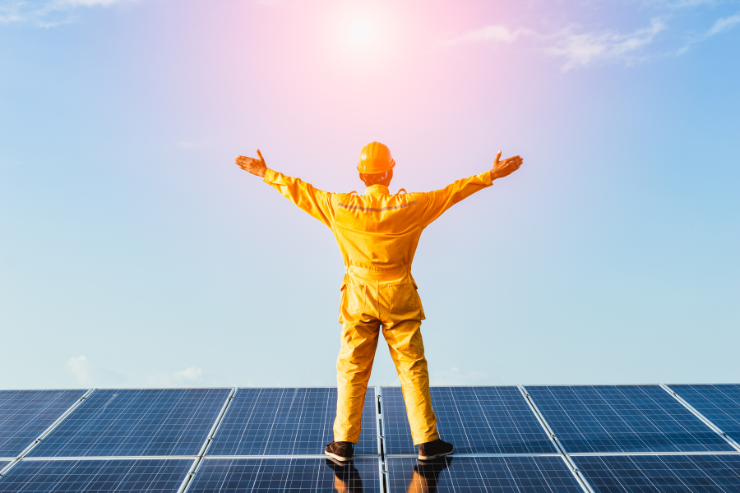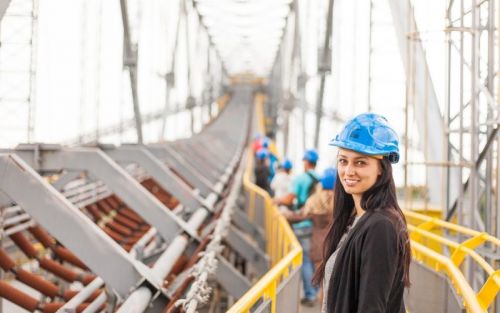
Welcome to the bright side of technology, where the sun meets security!
With solar energy, we welcome a world where the sun powers our homes and collaborates with cutting-edge technology to ensure safety and data protection.
This is no sci-fi fantasy; it’s the real-world impact of facial recognition on solar safety, illuminating a path toward a safer and more secure solar-powered future.
Facial recognition in the solar industry can be a game-changer, especially when planning your budget.
How?
Let’s uncover the magic behind the merging of sunlight and security as we explore the captivating realm of facial recognition in solar energy.
Artificial Intelligence (AI) is revolutionizing the solar business, introducing transformative changes that enhance efficiency, reliability, and security across various facets of the industry.
Let’s delve into three key areas where AI is reshaping the solar landscape: image processing, solar installers, and the culmination of these advancements in facial recognition.
Image Processing for Enhanced Efficiency:
Precision in Solar Panel Placement: AI-powered image processing algorithms accurately analyze satellite imagery or drone captures. This ensures optimal placement of solar panels, maximizing sunlight absorption and energy generation.
Fault Detection and Maintenance: AI detects anomalies or faults in solar panel images, allowing for proactive maintenance. Early identification of issues ensures timely repairs, minimizes downtime, and optimizes system performance.
Empowering Solar Installers with AI:
Automated Site Assessment: AI simplifies and expedites the site assessment process for solar installations. By analyzing geographical and structural data, AI tools provide valuable insights, helping installers make informed decisions about the most efficient locations for solar infrastructure.
Streamlined Project Management: AI-driven project management tools optimize scheduling, resource allocation, and logistics. This streamlines the installation process, reducing costs and increasing overall project efficiency.
Culmination in Facial Recognition for Security:
Enhanced Access Control: Facial recognition technology ensures secure access control within solar facilities. Identifying authorized personnel minimizes the risk of unauthorized entry, safeguarding both physical assets and sensitive data.
Customized Security Protocols: Integrating facial recognition adds a layer of personalized security. Solar businesses can tailor access permissions based on individual identities, reducing the reliance on traditional credentials and enhancing overall security.
In conclusion, AI is not merely changing but revolutionizing the solar business.
From optimizing the placement of solar panels through image processing to empowering installers with intelligent tools, AI is streamlining operations and driving efficiency.
The journey culminates in facial recognition technology, which adds a new dimension to security, ensuring a seamless and secure future for the solar industry.
Facial recognition technology is a sophisticated system designed to identify and verify individuals based on their unique facial features.
Here are the key features that make facial recognition a powerful and versatile technology:
Identifying and locating faces within an image or video frame.
Capturing a clear and detailed image of the facial features.
Comparing the captured facial features with a database of stored faces.
Analyzing unique facial characteristics like the distance between eyes, nose shape, and jawline.
Creating a three-dimensional model of the face for more accurate identification.
Implementing techniques to detect and prevent the use of photos, videos, or other non-living representations to trick the system.
Analyzing and identifying faces in real-time, often within milliseconds.
Storing and managing a database of facial templates for comparison.
Implementing privacy features to secure and regulate the use of facial data.
Collaborating with other security or access control systems.
Facial recognition’s key features boost its effectiveness and reliability, making it essential for security, law enforcement, user authentication, and personalized services.
Enhanced Access Control:
Facial recognition contributes to robust access control systems in solar facilities. Only granting access to authorized personnel ensures that only individuals with approved identities can enter sensitive areas, minimizing the risk of unauthorized access or tampering.
Tailored User Authentication:
Solar systems equipped with facial recognition can customize user authentication protocols. This personalization adds an extra layer of security by ensuring that only designated individuals can operate or modify solar equipment, reducing the likelihood of accidental or intentional misuse.
Quick and Secure Employee Verification:
Facial recognition expedites the employee verification process. This means that solar power facilities can swiftly confirm the identity of staff members, contractors, or visitors, streamlining security procedures and allowing for more efficient personnel management.
Intruder Detection and Alerts:
Facial recognition technology helps in the swift detection of intruders. By analyzing faces against a predefined database, solar security systems can identify individuals not authorized to be on the premises, triggering immediate alerts and responses to potential security threats.
Reduced Dependency on Physical Credentials:
With facial recognition, solar safety measures can move beyond traditional physical credentials like ID cards or keycards. This reduces the risk of lost or stolen access cards, as individuals can be identified based on their unique facial features, enhancing overall security.
Monitoring and Surveillance:
Facial recognition enables continuous monitoring and surveillance of solar installations. Security systems can analyze faces in real-time, providing a more proactive approach to identifying and addressing security concerns, such as suspicious activities by ghost employees or unusual behavior within the facility.
Integration with Smart Security Systems:
Facial recognition can seamlessly integrate with other smart security systems. This synergy allows solar facilities to create comprehensive security ecosystems, combining facial data with other sensors and technologies to provide a holistic approach to safety and security management.
Integrating facial recognition into solar safety and security measures enhances overall efficiency, reduces vulnerabilities, and ensures a more reliable and tailored approach to safeguarding solar power installations.
Solar facilities can take significant strides towards a safer and more secure energy landscape by leveraging facial recognition technology.
In the dynamic intersection of solar energy and security, facial recognition emerges as a transformative force, fortifying safety measures and enhancing operational integrity.
As we conclude our exploration into the impactful fusion of these realms, it’s evident that facial recognition plays a pivotal role in shaping a secure future for solar businesses.
In the pursuit of optimizing safety and security, innovative solutions become paramount.
MobiClocks®️ can harness the potential of facial recognition technology to elevate the safeguarding of solar installations.
It offers features designed to streamline access control, expedite employee verification, and fortify surveillance through real-time facial analysis.
By embracing MobiClocks®️’ facial recognition system, solar businesses can bolster their security infrastructure and foster a seamless and efficient operational environment.
The synergy of solar energy and facial recognition technology becomes a beacon, guiding the way toward a future where safety and sustainability go hand in hand.

There are a lot of ways to deal with no call, no show employees. The policies you enforce will depend on the type of manager you are.

Naturally, productivity and work ethics are positively and strongly correlated. There are many ways to set up a work environment where ethics are valued, and one of the most effective ways has proven to be guidance and empowerment. If you are ready to tak

Having an employee handbook is essential to the efficient operations of your business. In general, it contains all the procedures and policies that go on in your firm. It’s vital to have one, especially in construction companies, where logistics plays a h